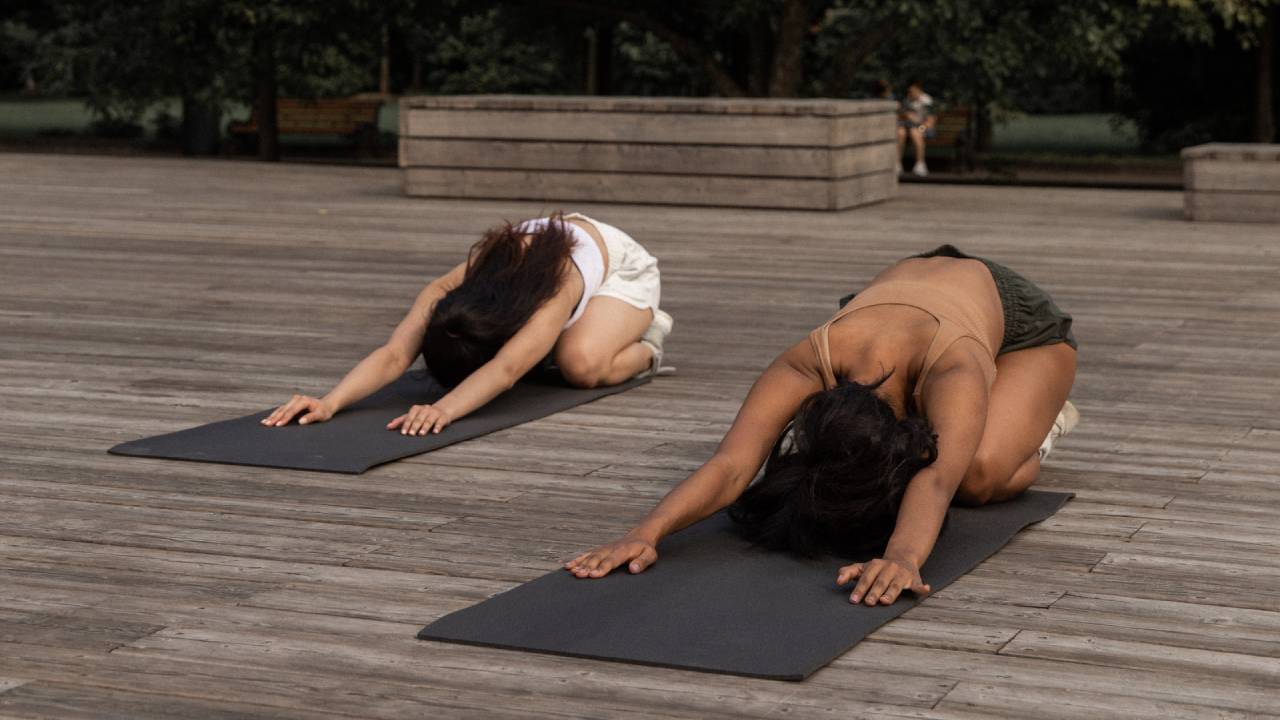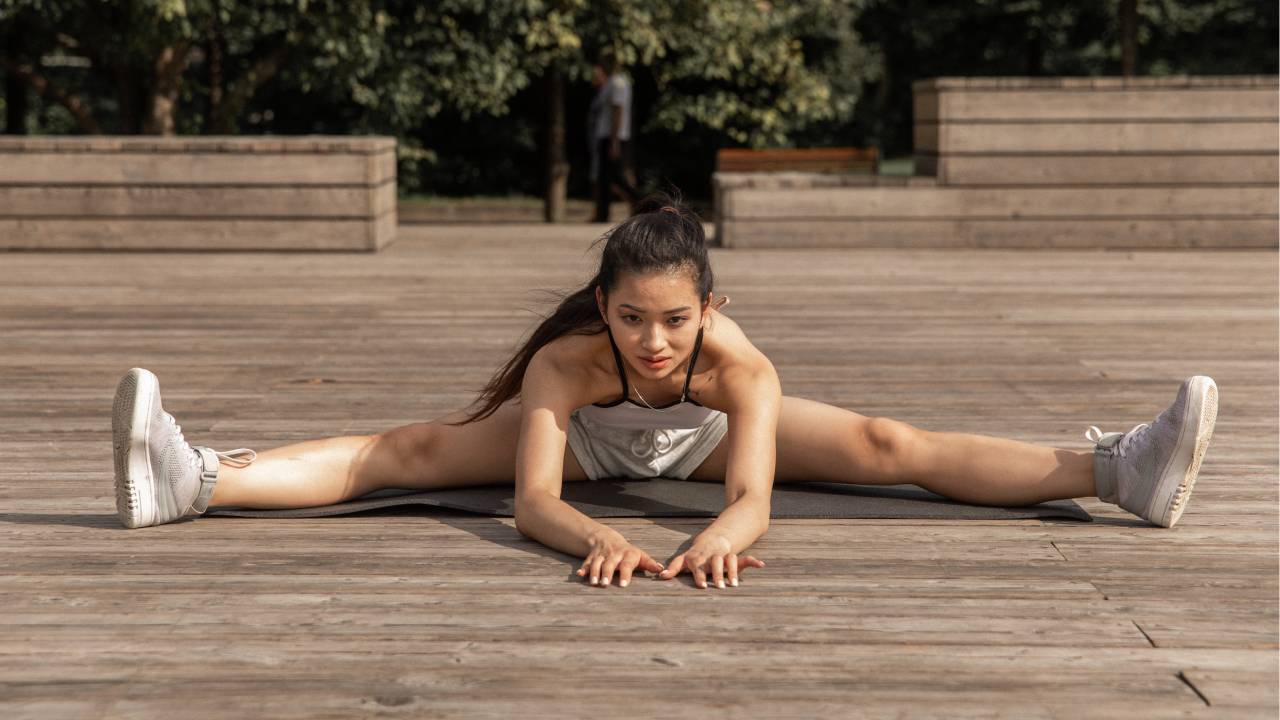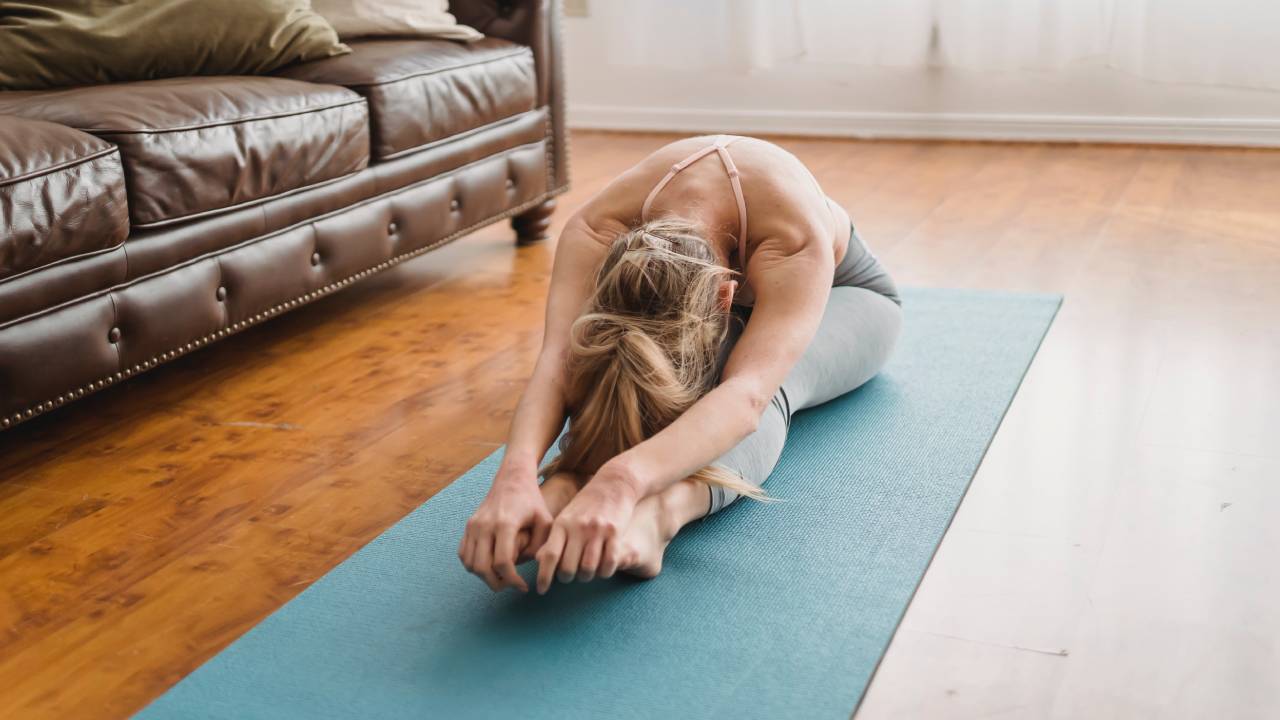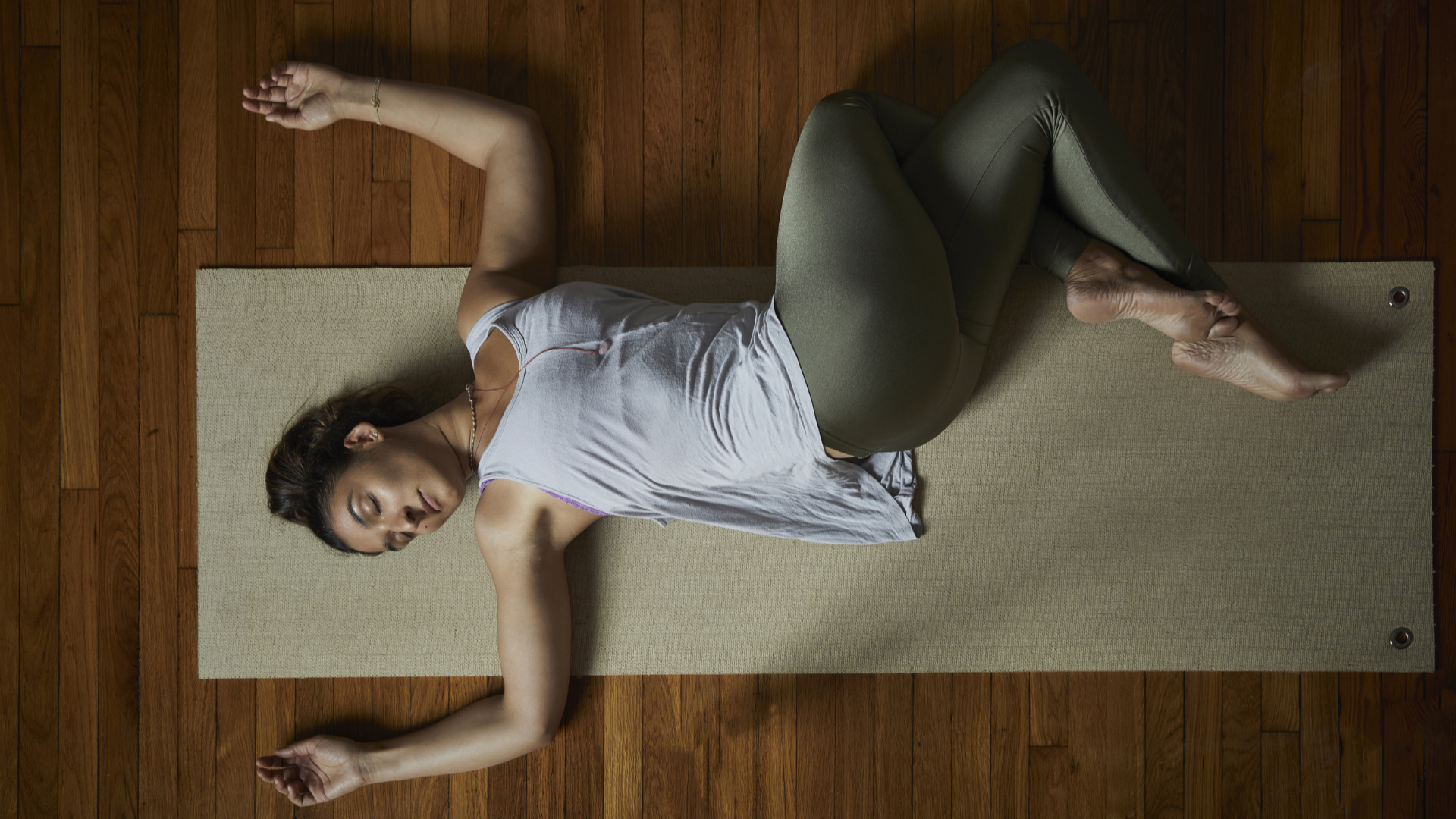
Feeling stressed by life and like you need to slow down? Then try this 7-move Yin Yoga flow to slow down, breathe and appreciate, after a long day.
Life is busy. There are always a million things to be done each day and to-do lists that never seem to get any smaller. Modern living presents you with many stressors each day and if you don’t find a way to decompress, this can lead to physical health problems, as well as anxiety and depression.
Your brain is exposed to multiple stimuli every second of every day and you need time to process the events that happen around, and to, you. How often do you stop, slow down and do nothing? Even watching TV or relaxing with friends is still your brain processing and taking things in. By doing nothing, I mean just being. Being present and still. I can guess it’s a handful of times in your whole life (unless you regularly practice yoga or meditation with the best yoga mat at your disposal).
Slowing down is a skill to be learnt, just like riding a bike. To start with, you have to allow yourself to do nothing and that’s part of the struggle. In order to be comfortable with being still and quiet, you have to practice it over and over again. This is what Yin Yoga does.
What is Yin Yoga?
When practicing Yin Yoga, you hold postures for a number of minutes in a passive stretch to relax the connective tissue of the body. It’s a quiet practice where you're with your body and mind, challenging yourself to be still. It’s uncomfortable at first to be alone with your thoughts, to be in unfamiliar postures for your body but the more you do it, the easier it becomes. After a while, you start to soak up the nourishment it gives and experience what a quiet mind feels like.
In Yin, you resolve to be still once you enter a posture and you sit with whatever comes up for you. Anything but pain which is where you would exit the posture early or take a different posture entirely. A Yin Yoga class has space for you to explore the variations of postures that suit you. Nothing is rushed so you can gradually learn the process of slowing down. You'll feel peaceful, calm and fulfilled at the end of a Yin practice. Your whole body will have slowed down including your heart rate and breath as you enter your rest and digest mode rather than your fight or flight.
Once you know how to slow down, you can process everything that’s happened in a day, take a step back, reflect and improve ourselves. This is the gift of yoga and arguably it’s more needed than ever.
Get all the latest news, reviews, deals and buying guides on gorgeous tech, home and active products from the T3 experts
1. Cross legged meditation

Find a comfortable cross legged position. You can sit on a the best yoga block or cushion to lift your hips and allow your knees to drop. If your knees are high, you'll find it hard to relax your leg muscles. Remember Yin is about a passive stretch so find a seated position that allows you to feel relaxed.
You don’t have to be cross legged if this isn’t accessible to you and another version you can try is to sit back on the heels or with your legs out in front of you. It may even feel nice to sit with your back against the wall so you can relax your back muscles too. Once you’ve found your position, ensure you can relax in it and take 10 deep breaths slowly in and out. Centre yourself and become aware of the parts of your body that connect with the floor beneath you.
2. Supported child’s pose

Slowly release your seated position and come to sit back on your heels. Place a pile of cushions in front of you in the center of your mat. Keep your knees apart, wide enough for you to lie down onto the cushions. Place your arms either side of the cushions palms up or down, choosing the variation that’s most comfortable for your body. You can rest your forehead on the cushions or turn your head to the side. If turning your head, ensure you turn the other way halfway through. Hold this position for four minutes. Let your breath be natural, bringing your focus to any sensations in the body and the movement of your breath. Be present in the moment.
3. Sphinx

Whenever you exit a Yin Yoga posture, remember to take it slow. As you hold for a number of minutes, moving after this stillness can take some time so never rush. Once you’re ready to move from your supported child’s pose, start to make your way down onto your stomach. Lying with your forearms on the floor, begin to come into the backbend known as Sphinx. You can take a smaller backbend by moving your elbows away from you, or a deeper one by moving them so they’re stacked underneath your shoulders. Hold this position for three minutes, paying attention to your natural breath. Observe how your body remains still, apart from the movement of your abdomen against the floor. Maybe at this point you're starting to notice how your thoughts are also slowing down. Stay present.
4. Dragonfly

Before we move into the next posture, take a moment in a seated position or lying on your back. Within Yin Yoga, this is known as the rebound. This is where you pause to feel the body and observe what’s going on within. Do this for a few seconds to a minute or so.
Once you feel ready, make your way to a seated position. You can sit on a block or cushion if this is more comfortable. Take your legs wide ensuring you're still comfortable and not overstretching. Begin to fold forward paying attention to the sensations you feel in your inner thighs. Remain here for five minutes. There is no need to rush towards the floor. Remember, you're slowing down during this practice so take your time to go deeper, only moving forward when your body invites you.
5. Caterpillar

From your wide legged position, help your legs back together using your hands behind your knees. Take a breath or two before bringing the legs out in front of you as this is where you'll move into Caterpillar. Allow your spine to round as you fold forward, placing your hands wherever feels good for you. Some people enjoy placing cushions on their legs to support their body whereas others prefer to support the head with their heads. The main thing is to make sure you can hold this without fidgeting for five minutes. Take slow deep breaths and appreciate where you are in your posture. There’s no competition and no rush. Just be.
6. Cat pulling tail

Releasing slowly from your forward bend by rounding and lifting up through the spine, vertebrae by vertebrae, keeping your chin close to your chest. Take your time to take a gentle stretch, bringing your arms overhead. Come to lie down on your back for the final posture of this sequence.
Once you’re lying down, bend your left knee and place your left foot on your right knee. Bring your left knee to the right side into a twist. Place your right hand on your left knee. Bend your right leg and take hold of your right foot with your left hand. If you can’t reach, don’t struggle as it’s not essential to hold the right foot. Hold this position for three minutes. Feel the body relax the longer you hold it and soften your shoulders. Once you’ve done the three minutes on this side, change sides. Your right knee will now be moving to the left side in your twist. Your right hand will be reaching for your left foot. Take another three minutes here before releasing.
7. Relaxation

Yin Yoga is a quiet, still practice so it’s important to end it with relaxation. This relaxation can take any shape but for most people, lying on the back is the preferred option. You can take cushions under your knees to support your lower back and perhaps a cushion under the head. Take three to five minutes here, resting in the stillness you've created through your practice.
Kat has 10 years of yoga teaching experience with further training in supporting injured students. She is qualified to teach Yin Yoga, Hormone Yoga Therapy and more traditional forms of Hatha yoga. She also has a certificate as a Yoga Therapy Practitioner.